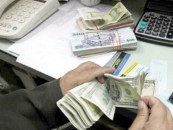Oil prices rise on Iran sanctions, outlook uncertain
After Saudi Arabia and Russia say they will raise output to make up for expected disruptions

Oil pumpjacks are seen near Aneth, Utah, US, October 29, 2017. PHOTO: REUTERS
Benchmark Brent crude oil was up 30 cents a barrel at $84.88 by 0750 GMT. On Thursday, Brent fell by $1.34 a barrel or 1.6 percent. The contract was on course for a gain of around 2.6 percent for the week.
US light crude was up 40 cents at $74.73, a gain of 2.2 percent since last Friday.
Iran praises Europe for keeping business with Tehran
Both crude benchmarks retreated on Thursday following news of a rise in US oil inventories and after Saudi Arabia and Russia said they would raise output to at least partly make up for expected disruptions from Iran.
But the pull-back did little to dent two months of rises that have added 15-20 percent to oil prices since the middle of August as impending US sanctions on Tehran restrict Iranian crude oil exports.
Washington wants governments and companies around the world to stop buying Iranian oil from Nov 4 to put pressure on Tehran to renegotiate a nuclear deal.
It is not clear exactly how much impact the sanctions are having on supply but many analysts say they expect Iranian exports to drop by around 1 million barrels per day (bpd).
“Iranian exports could fall below 1 million bpd in November,” US bank Jefferies said. “It now appears that only China and Turkey may be willing to risk US retaliation by transacting with Iran.”
The investment bank said there was enough oil to meet demand, but “global spare capacity is dwindling to the lowest level that we can document ... meaning any further supply disruptions would be difficult for the market to manage - and could lead to spiking crude oil prices”.
US terminates Treaty of Amity with Iran
Speculators have accumulated bullish long positions betting on a further rise in prices amounting to almost 1.2 billion barrels of oil. Meanwhile, the number of short positions in the six biggest oil futures and options contracts has fallen to the lowest level since before 2013.
But Goldman Sachs says the uptrend may not last.
“While upside price risks will prevail for now, fundamental data outside of Iran has not turned bullish in our view,” Goldman said in a note to clients.
“We expect fundamentals to gradually become binding by early 2019 as new spare capacity comes online ... pointing to the global market eventually returning into a modest surplus in early 2019.”



















COMMENTS
Comments are moderated and generally will be posted if they are on-topic and not abusive.
For more information, please see our Comments FAQ